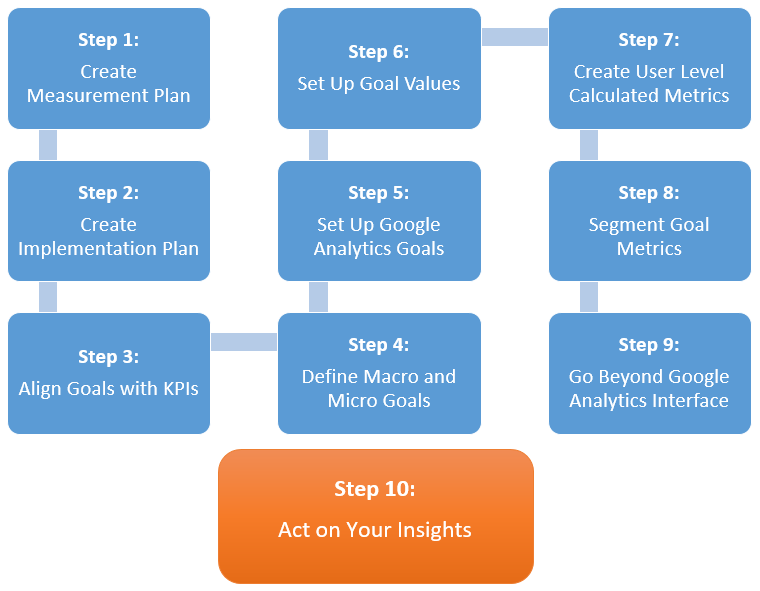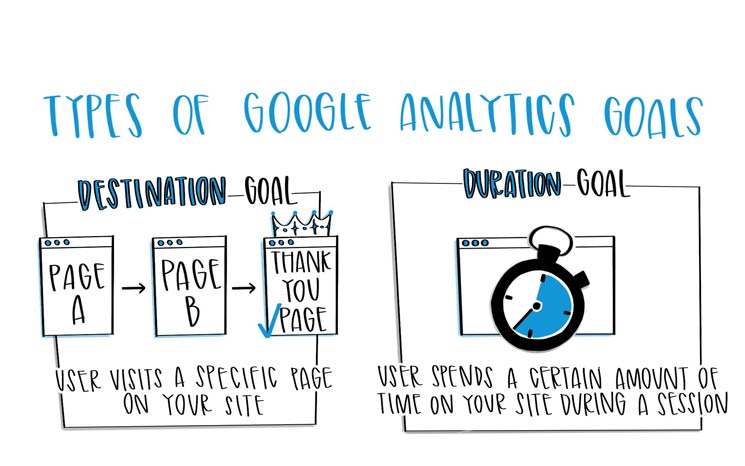What Data Is Google Analytics Goals Unable to Track: Vital Details
What Data Is Google Analytics Goals Unable to Track: Vital Details
Blog Article
Discover the Limitations of Google Analytics Goals: Revealing the Data Types That Remain Untrackable
As organizations increasingly rely upon data-driven decision-making, recognizing the constraints of tools like Google Analytics becomes paramount. While Google Analytics Goals deal important understandings into user communications, there exist data types that avoid tracking, posing challenges to a comprehensive understanding of user habits. These untrackable information kinds increase inquiries concerning the precision and efficiency of the analytics data that organizations greatly count upon for their electronic techniques. Curious to uncover the hidden dead spots in your data evaluation procedure?
Insufficient User Trip Tracking
Incomplete user trip monitoring within Google Analytics can prevent the capability to accurately assess customer actions. When the individual journey is not totally tracked, there are voids in the information that protect against an extensive understanding of how users engage with a web site. This lack of insight can lead to missed opportunities for optimization and renovations to the individual experience.
One common issue with incomplete individual journey tracking is the inability to see the complete path that individuals take previously completing an objective or leaving the website. Without this information, it is challenging to identify where customers may be experiencing challenges or friction factors that stop them from transforming. Furthermore, incomplete monitoring can obscure the effect of particular marketing efforts or web site adjustments on individual actions.
To address this limitation, it is critical to establish proper monitoring mechanisms within Google Analytics to catch the entire user trip. This might entail establishing occasion tracking, goal funnels, or using tools like Google Tag Supervisor to make certain that no vital interactions go unrecorded. By getting a comprehensive view of the customer journey, website proprietors can make even more enlightened choices to improve user interaction and drive conversions.
Attribution Difficulties
Navigating with attribution difficulties in Google Analytics calls for a comprehensive understanding of how different touchpoints add to the general conversion process. Acknowledgment obstacles emerge from the complexity of modern customer journeys, where customers interact with numerous channels prior to transforming.
One usual acknowledgment obstacle is the difficulty in connecting conversions to the proper source, especially in situations where individuals interact with multiple networks before converting. This can bring about inaccuracies in figuring out which advertising initiatives are driving the most conversions. Additionally, cross-device tracking poses one more acknowledgment difficulty, as users often switch over between tools throughout their journey, making it challenging to track their interactions flawlessly. Marketers need to carefully interpret and analyze attribution information to make educated choices and maximize their advertising techniques efficiently.
Offline Conversions
Provided the difficulties connected with connecting conversions precisely in online channels, the measurement of offline conversions presents a substantial opportunity for online marketers seeking a more extensive understanding of their clients' trip. Offline conversions describe activities that customers take in click over here now the physical world, such as making purchases in brick-and-mortar stores or over the phone, going to events, or involving with published materials - what data is google analytics goals unable to track. These conversions are vital for organizations that run both online and offline, as they offer useful insights right into the efficiency of advertising and marketing projects across various touchpoints
Tracking offline conversions typically presented a significant obstacle for marketing experts, as it was challenging to attach these activities back to specific online communications accurately. Nevertheless, with advancements in modern technology, such as the assimilation of CRM systems, special identifiers, and discount coupon codes, organizations can currently link the space in between online and offline information to gain a much more all natural sight of customer actions. By properly gauging offline conversions, marketing professionals can enhance their approaches, assign sources a lot more successfully, and inevitably improve the total client experience.
Cross-Device Monitoring
Cross-device monitoring plays an essential duty in recognizing the interconnected nature of consumers' digital interactions throughout numerous devices. In today's omnichannel world, where individuals perfectly change in between desktops, tablet computers, and smartphones, tracking their behavior throughout these tools is essential for marketing experts to obtain a detailed view click here for more info of their client journey.

Moreover, personal privacy worries and laws such as GDPR and CCPA have better complex cross-device tracking. With users demanding even more control over their information and raised constraints on monitoring innovations, marketers must find cutting-edge and privacy-compliant means to link user communications across tools.
Dynamic Content Interaction
Comprehending individual involvement with dynamic material is critical in optimizing electronic advertising approaches for improved audience communication. Dynamic web content describes website aspects that change based on customer actions, choices, or other variables, supplying a customized experience. Tracking user communications with dynamic material poses challenges for conventional analytics devices like Google Analytics.
While Google Analytics can track fundamental communications like clicks and page sights, it might battle to record more nuanced interactions within dynamic material. what data is google analytics goals unable to track. Metrics such as time invested in specific vibrant components, float actions, or interactions within pop-ups are often not easily measurable using standard monitoring techniques. This constraint prevents marketers' capacity to totally grasp exactly how customers are engaging with vibrant web content and tailor their strategies accordingly

Conclusion
Finally, Google Analytics goals have constraints in tracking incomplete customer trips, connecting conversions precisely, recording offline conversions, tracking cross-device interactions, and gauging dynamic web content involvement. These restrictions highlight the significance of checking out extra monitoring methods and tools to obtain an extra extensive understanding of individual habits and conversions beyond what Google Analytics can supply.
While Google Analytics Goals offer beneficial insights into individual interactions, there exist data types that thwart tracking, posturing difficulties to an extensive understanding of individual actions.Incomplete user trip monitoring within Google Analytics can hinder the capability to precisely examine user actions. When the customer journey is not completely tracked, there are gaps in the data that avoid a thorough understanding of exactly how users engage with a site.One typical problem with incomplete user trip tracking is the failure to see the full path that individuals take in the past completing an objective or leaving the website. By gaining a thorough sight of the individual journey, internet site owners can make even more informed decisions to improve user involvement and drive conversions.
Report this page